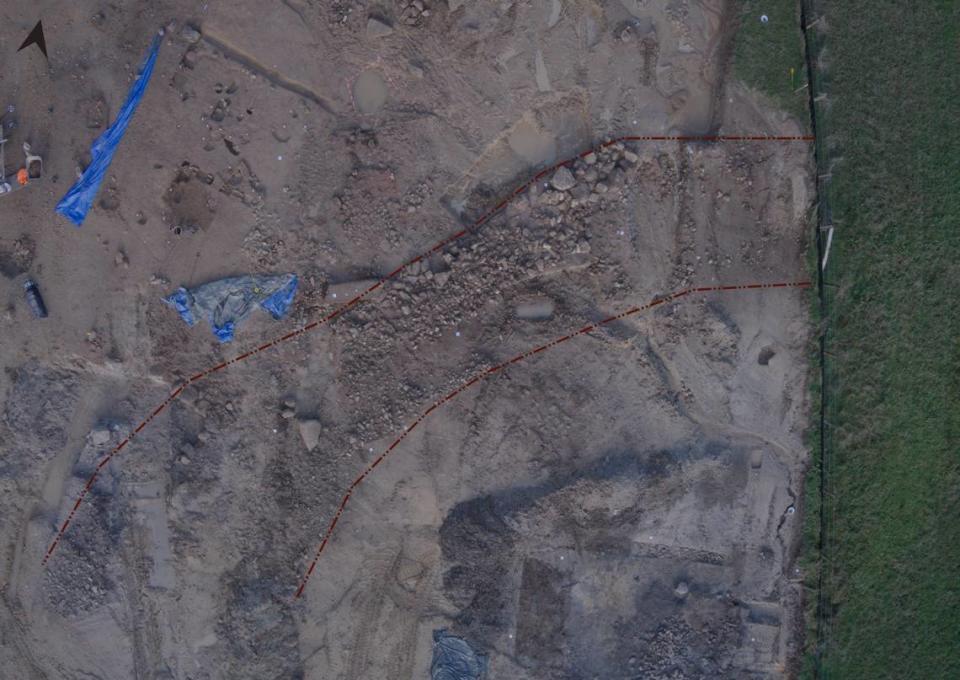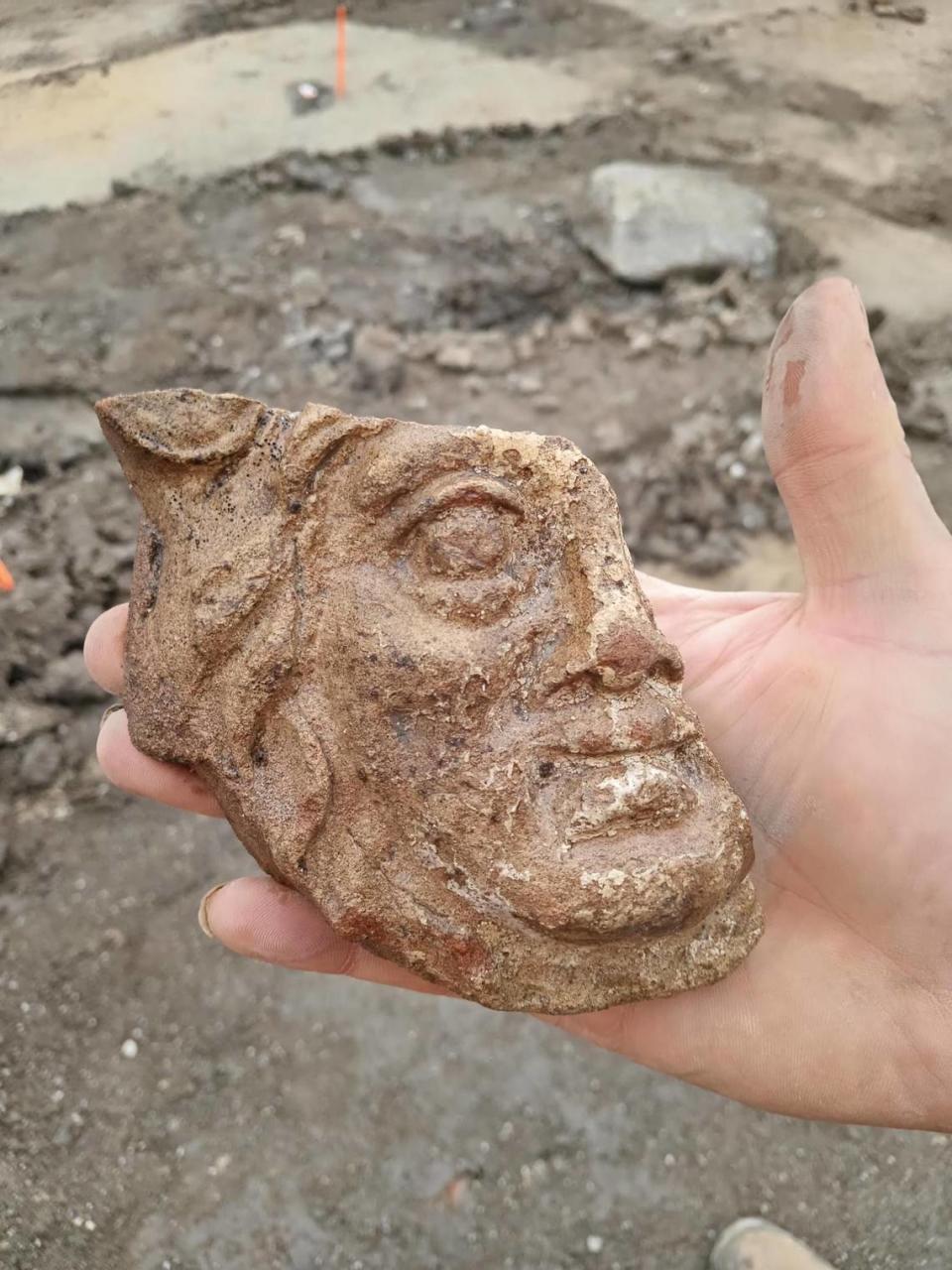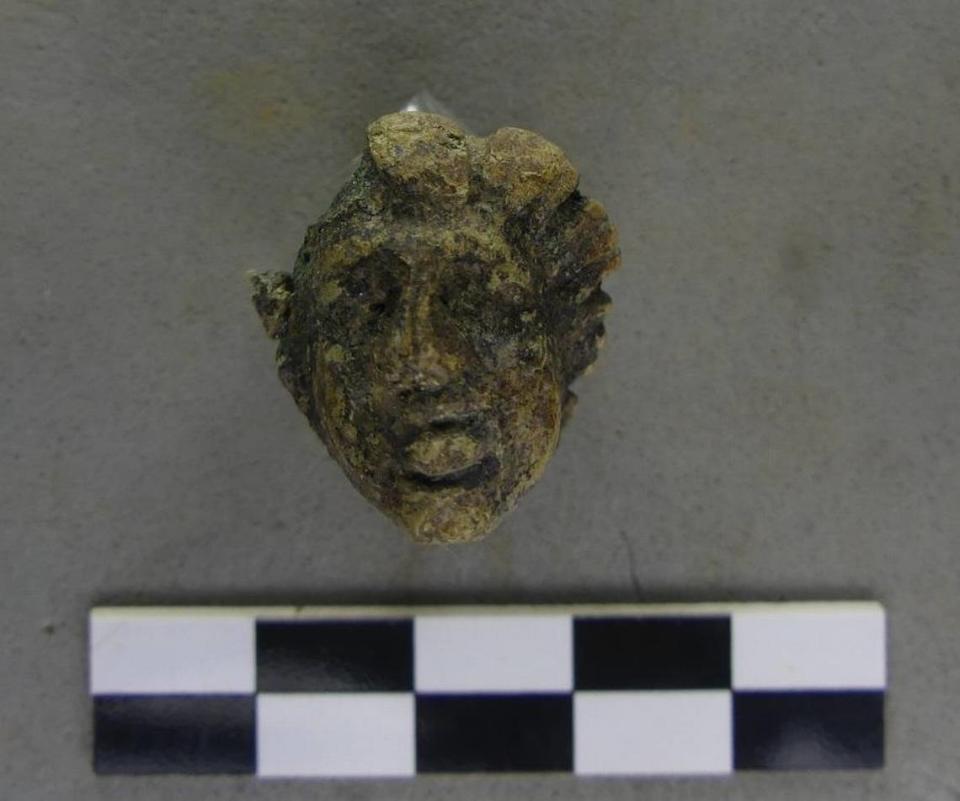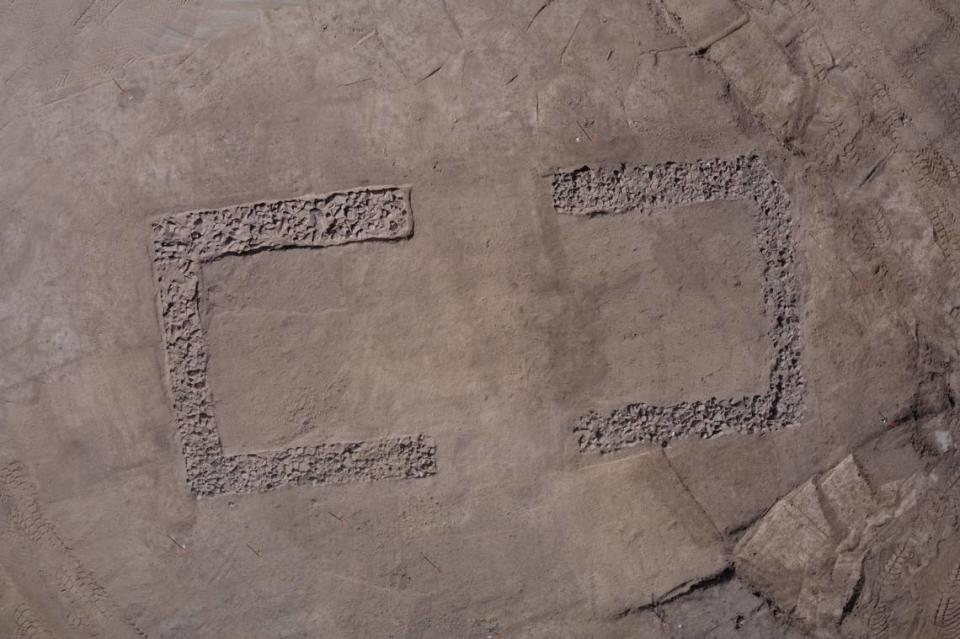Ancient Roman monument — surrounding treasure-filled spring — found in France. See it
Much about the ancient Roman empire has been extensively studied and documented. But occasionally, something unique is found.
That’s what happened to archaeologists in France recently.
Archaeologists excavating a field in Chamboret ahead of road construction unearthed the ruins of a monumental ancient Roman structure, the French National Institute for Preventive Archaeological Research said in an April 12 news release.
The atypical stone ruins dated to the third century A.D., the institute said. The arch-shaped structure curved around a spring. A photo shows these ruins.

Uncover more archaeological finds
What are we learning about the past? Here are three of our most eye-catching archaeology stories from the past week.
→ Farmer loses plow part in Polish field — then finds historic artifact during search
→Divers remove ancient Roman cargo from shipwreck — and find unique carvings. See them
→ Metal detectorists find ancient portrait in Danish field. See the 'legend' it depicts
The 1,700-year-old structure was similar to a boundary wall. Archaeologists used radar surveys to confirm the structure continued onto the neighboring plot of land but did not excavate the area.
The central water source was also modified with a cistern-like capture structure, archaeologists said. Several artifacts — including pottery fragments, a stone carved in the shape of a deity and ancient Roman coins — were found in the spring.
Photos show some of these treasures and other artifacts found at the site.

Archaeologists linked the unusual ruins to the ancient Roman empire’s shifting approach to modern-day France in the third century.
The ancient Roman empire began invading modern-day France in the second century B.C., according to Britannia. By 50 B.C., they took control of the region and named it Gaul. Rome’s control over the region began to waver around 250 A.D. but continued until the fifth century.

Archaeologists described the site in Chamboret as remarkable and unprecedented for the area. The purpose of the ruins is unknown and specialized follow-up research is underway.
Another older set of ruins was also found at the site, the institute said. These ruins — a rectangular stone building and related artifacts — were left from an agricultural and herding community, which eventually abandoned the site.

Chamboret is in central France, a 240-mile drive southwest of Paris.
Google Translate was used to translate the news release from the French National Institute for Preventive Archaeological Research (Inrap).
Man picks up sharp stone — and finds 5,600-year-old artifact in Poland, photos show
Divers remove ancient Roman cargo from shipwreck — and find unique carvings. See them
Rare 800-year-old silver artifacts found at church in Sweden — and spark a mystery

